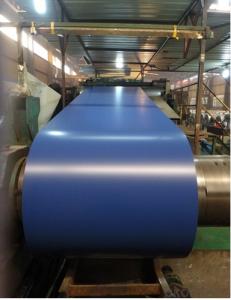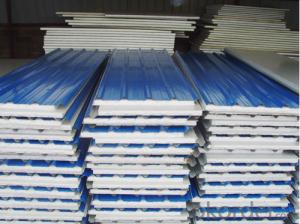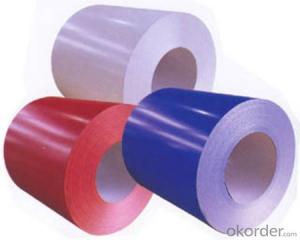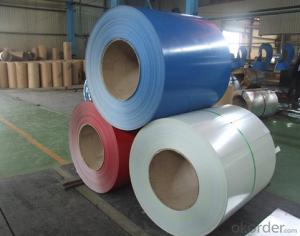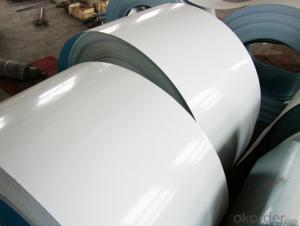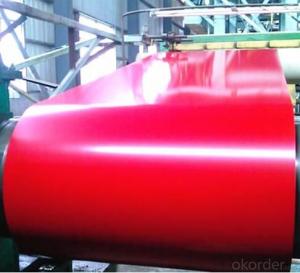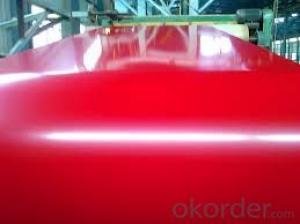Pre-Painted Galvanized Steel Roofing Sheet PPGI 0.4mm-0.5mm
- Loading Port:
- China main port
- Payment Terms:
- TT OR LC
- Min Order Qty:
- 25 m.t.
- Supply Capability:
- 10000 m.t./month
OKorder Service Pledge
OKorder Financial Service
You Might Also Like
Product Description
Prepainted galvanized steel coil, PPGI, PPGL, Prepainted galvalume/aluzincsteel, Color Coated Galvalume Steel Coil, Prepainted Galvalume Steel Coils, RAL color, 0.15-1.5mm, SGCC, CGCC, CGLC, DX51D, TDC51D, ASTM A653, CS TYPE, S280GO, S350GD, G550, JIS G3312, EN 10169 JIS G3322, ASTM A755/755M, comercial and structual quality
Specifications of Pre Painted Galvanized Steel Coil:
1) Capacity: More than 20, 000 tons per month for PPGI coil product manufacture
2) Standard: JIS G3302, JIS G3312, ASTM A653M/A924M 1998
3) Grade: SGCC CGCC, DX51D, TDC51D, ASTM A653 CS TYPE, S280GD, S350GD, G550
4) Thickness: 0.15mm-1.5mm
5) Zinc coating weight: Z60-275G/M2, G30-G90
Zinc coating: Z60, Z80, Z100, Z120, Z180, Z275, G30, G60, G90
Alu-zinc coating: AZ60, AZ80, AZ100, AZ120, AZ180, G30, G60, G90
6) Width: 600mm-1250mm, 914mm, 1000mm, 1200mm, 1219mm, 1220mm, 1250mm or according to the customer's request
7) Coil ID: 508mm-610mm
8) Coil Weight: 3-6mt, or according to the customer's request
9) Color: RAL, or customer sample color
RAL9016, RAL9002, RAL5015, RAL5002, RAL3000, RAL3020, RAL3009, RAL6005, RAL8017 etc.
10) Color coating type: PE, PVDF, SMP, HDP, etc.
Regular Polyester, Silicon Modified Polyester, Polyvinylidene Floride, PVDF, Super Low Gloss Polyester
11) Surface protection: PVC film protected according to customer requested
12) Min trial order: 25 tons for 1X20' per delivery
PPGI Manufacture
ThicknessWidth LengthColor Coating type
0.2mm-1.5mm600mm-1250mmAs your requestRALPE, PVDF, SMP, HDP, etc.
Coating Chief Feature
ItemThicknessTypeFeature
Laminated film50μ MPolyethyleneProtecting from scratchs and contamination
(option)
Top coat20μ MPolyester FluorineChemical resistance and formability
Primer coat5μ MPolyesterWorkability, corrosion resistance and adhesion to the primer coating
Chemical treatment1μ MChromateGood adhesion and corrosion resistance
Substrate0.2mm-1.2mmGI. GL, ALGI. GL, AL
Back coat5± 2μ MEpoxyCorrosion resistance and adhesion to the substrate
Characteristics:
20 years outdoor liability approved, Corrosion protection, Long life-time for coated color
APPLICATION:
Exterior decoration of buildings: Roof and wallboards of industrial, commercial, residential and public facilities
Interior decoration of buildings: Wallboards, ceiling boards, partition boards, fireproof doors
Building accessories: Window panels, signboards
Home appliances: Oil/gas boilers, rice buckets, portable gas burners, etc.
World wide customer satisfaction:
More than 50 worldwide customers none-risky experiences approved.
Yogic has been exporting steel coils to more than 50 countries directly. Our long term supply extends to USA, UK, Germany, Italy, Spain, Belgium, France, Poland, Greece, Ukraine, Belarus, Russia, Turkey, Egypt, Saudi Arabia, Iran, Ethiopia, Niger, Brazil, Colombia, Chile, Peru, Australia, New Zealand, etc...
Classified symbol | Yield Point Minimum N/mm2 | Tensile Strength Minimum | Elongation Minimum % | Application | ||||
N/mm2 | Nominal Thickness mm (t) | |||||||
JIS | CNBM | 0.25≤t<0.4< td=""> | 0.4≤t<0.6< td=""> | 0.6≤t<1.0< td=""> | 1.0≤t<1.6< td=""> | |||
G3312 | specification | |||||||
CGCC | CGCC | -205 | -270 | -20 | -21 | -24 | -24 | Commercial |
CGCD | CGCD | --- | 270 | --- | 27 | 31 | 32 | Drawing |
--- | CG340 | 245 | 340 | 20 | 20 | 20 | 20 | Structural |
CGC400 | CG400 | 295 | 400 | 16 | 17 | 18 | 18 | Structural |
CGC440 | CG440 | 335 | 440 | 14 | 15 | 16 | 18 | Structural |
CGC490 | CG490 | 365 | 490 | 12 | 13 | 14 | 16 | Structural |
CGC570 | CG570 | 560 | 570 | --- | --- | --- | --- | Structural |
ASTM Designation | Yield Point Minimum | Tensile Strength Minimum | Elongation Minimum % | Application | Q/BQB 445-2004(China standard) | ASM A653/A653M | JISG 3312 | |
ksi(MPa) | ksi(MPa) | TDC51D+Z | (CS TYPE A+Z) | CGCC | ||||
A653(M)-99 CS TYPE A,B,C | --- | --- | --- | Commercial | TDC52D+Z | CGCD | ||
A653(M)-99 FS | --- | --- | --- | Lock Forming | TS250GD+Z | (G250+Z) | - | |
A653(M)-99 DS | --- | --- | --- | Drawing | TS300GS+Z | (G300+Z) | CGC 400 | |
A653(M)-99 SS Grade33(230) | 33(230) | 45(310) | 20 | Structural | TS350GD+Z | (G350+Z) | CGC490 | |
A653(M)-99 SS Grade37(255) | 37(255) | 52(360) | 18 | Structural | TS550GD+Z | (G550+Z) | CGC570 | |
A653(M)-99 SS Grade40(275) | 40(275) | 55(380) | 16 | Structural | ||||
A653(M)-99 SS Grade50(345) | 50(345) | 65(450) | 12 | Structural | ||||
A653(M)-99 SS Grade80(550) | 80(550) | 82(570) | --- | Structural | ||||
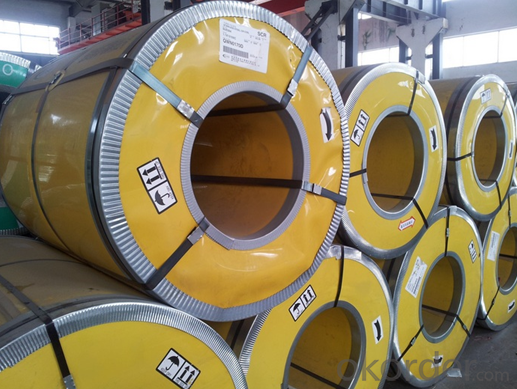
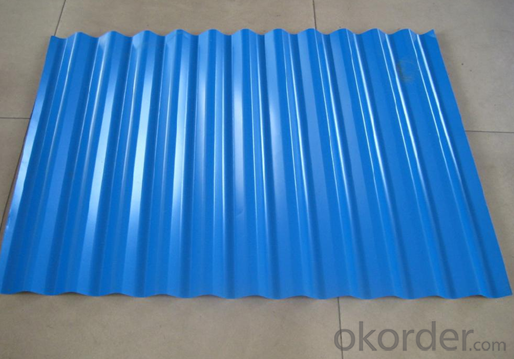
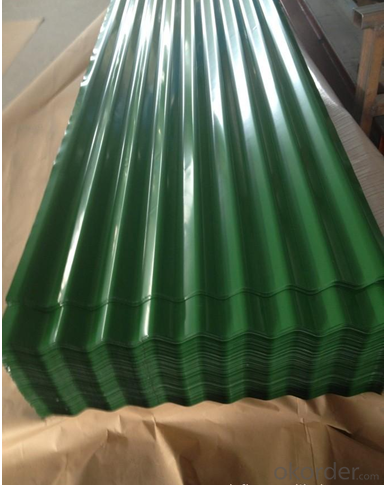
FAQ
1. Is the sample available?
Yes, samples can be sent for test if you need.
2.What's your MOQ?
25MT, it is for one container.
3.Do you have QC teams?
Yeah, sure, our QC team is very important, they will keep the quality control for our products.
- Q: I'm talking about the sort of carbon fiber that's used in the auto industry (mostly in supercars).If an object made of steel were to be copied by an exact same object, but made of carbon fiber - how lighter would the carbon fiber object be?For example, if a table is made of steel and it weighs X, how much will it weigh if it were made of carbon fiber?Thanks.
- In most applications, you do not want to make the graphite fiber composite object the same size as the steel object. You want it to have the same strength. So... the benefit of using the composite is not just the difference in density. What you really want to compare is the specific strength and you can define this slightly differently depending on your application. As a simple example, suppose you need to hang a weight of 100 pounds from a beam with a bar (so the load is pure tension) and not have the weight permanently stretch the bar (so stress in the bar is less than the yield stress). You can calculate the cross sectional area of steel and compare that to the cross sectional area of the graphite fiber composite required. If your application is more complicated, say it has to support the load and flex up to 10 degrees and survive some impact loading and operate at a max temperature of 200C, then you have more homework to do to select the best material. And... if you are not rich enough so that money is no object, you also need to consider the cost.
- Q: what do you think about it? Is it a good steel for the money? the knife that i have with that steel is the kershaw chill. good knife for the price
- 8Cr13MoV is a decent blade steel...not a great steel, but about as good as you will generally find without paying much higher prices. It's used by a number of well known knife makers... It's basically equivalent to AUS-8 and will work and hold an edge reasonably well for most basic cutting chores. *************************************** From Wikipedia, the free encyclopedia: 8Cr13MoV, a Chinese stainless steel tempered at the Rc56 to Rc58 range and used in the Tenacious, Persistence, Ambitious, Resilience, Grasshopper, Kiwi3 and Byrd lines of knives. Often compared to AUS-8, but with slightly more Carbon.
- Q: in a lab at school we did heat treatment of steelwhat are the possible phases present in the steel sample in as-received, as-quenched and as-tempered conditions? specifically when is it ferrite, austenite and pearliteis the steel originally in the ferrite phase? then when headed turns into austenite and when quenched martensite is formed and when tempered cermentite is formed...........where is pearlite involved and am i correct about the ferrite?
- hey from what i learned in uni last sem, steel is originally ferrite form at first at room conditions. it will undergo poly morphic transformation to become FCC structure austenite form at 912 degree celcius. under conditions, it can become pearlite (which is a combination of ferrite and cementite) or bainitie( a finer form of pearlite). queching conditions to room temperature will form martensite which is the strongest but brittle steel form. tempered cementite is formed when we quench it and then raise temperatures before sir cooling. hope it helps, pls vote me best answer is i deserve it. thanks
- Q: Is it just because brass is reloadable? But what makes it reloadable? What does brass bring to the equation that the steel cased ammo can't do?
- When 9mm was short I bought some steel Tula ammo, it was cheap and available. When at the range I was shooting it and it sounded different and felt different, way less kick. So I loaded up a mix of Tula and some Federal. Big difference between them. I also had failure to eject on the steel, then put brass in and did not have that problem. I do not buy cheap steel ammo anymore.
- Q: where can i find information online about steel residential homes that use solar energy?
- Steel okorder
- Q: What are the common coil grades available for steel coils?
- There are several common coil grades available for steel coils, each with its own specific properties and applications. Some of the most commonly used coil grades include: 1. Hot Rolled Coils (HRC): This grade is produced by heating a slab of steel above its recrystallization temperature and then rolling it into a coil. HRC coils are known for their excellent weldability and formability, making them suitable for a wide range of applications such as construction, automotive manufacturing, and general engineering. 2. Cold Rolled Coils (CRC): These coils are produced by further processing hot rolled coils through cold reduction, which involves passing the steel through a series of rollers at room temperature. CRC coils have superior surface finish and dimensional accuracy, making them ideal for applications that require a smooth and uniform appearance, such as automotive body panels, appliances, and electrical equipment. 3. Galvanized Coils (GI): Galvanized steel coils are created by coating regular carbon steel coils with a layer of zinc through a hot-dip galvanizing process. This provides excellent corrosion resistance, making GI coils suitable for outdoor applications like roofing, fencing, and structural components. 4. Stainless Steel Coils: Stainless steel coils are manufactured from a variety of grades, with the most common being austenitic (such as 304 and 316) and ferritic (such as 430). Stainless steel coils offer excellent corrosion resistance, high temperature resistance, and aesthetic appeal, making them widely used in industries like food processing, chemical processing, and architecture. 5. Electro-galvanized Coils (EG): Electro-galvanized coils are similar to GI coils, but the zinc coating is applied using an electrolytic process instead of hot-dipping. EG coils have a thinner and smoother zinc layer, making them suitable for applications that require a brighter and more aesthetic appearance, such as automotive parts, appliances, and decorative items. These are just a few of the common coil grades available for steel coils. The selection of the appropriate grade depends on factors such as the intended application, required mechanical properties, and desired aesthetics. It is important to consult with steel suppliers or industry experts to determine the most suitable coil grade for a specific application.
- Q: i would like to know of any companies who buy shredded scrap steel
- We are one of the biggest steel mills in Asia. Under our group, we have steel mills in Thailand and Bangladesh. On the monthly basis, we purchase steel scrap HMS1/2 80:20 and the shredded ISRI210/211, ISRI211 by bulk and 20' container to Thailand and Bangladesh. Due to the limitation of our existing shredded steel scrap supplier, we need to get more supply of the shredded. Please contact us or offer us of ISRI 210/211 or ISRI211 CFR Chittagong, Bangladesh with 500mt - 2000mt per shipment by 20' container. If any questions, please feel free to contact us.
- Q: How are steel coils used in the manufacturing of automotive fenders?
- Steel coils are used in the manufacturing of automotive fenders by being processed and shaped into the desired form to create the outer structure of the fender. The coils are cut, bent, and welded together to create the necessary shape and strength required for a fender.
- Q: How are steel coils used in the production of containers?
- Steel coils are used in the production of containers as they are the primary material for manufacturing container bodies. These coils are shaped and welded into the desired container shape, providing strength and durability to the final product.
- Q: I know that it is used for katanas and swords but what is it and is it good i am pretty sure that it is the process of the steel but can I have a little more information.
- Damascus or Wootz was a type of steel that appeared around 300BC It originated in India before spreading throughout Asia and the Middle East. It was considered a good steel, and for it's date of origin, exceptionally advanced for the level of technology in the ancient world. However the techniques to create the steel were lost forever after a decline in the swords manufacturing. The most popular theory is that the metal containing the required trace elements became less available over time due to unreliable trade routes. In the modern area, many scientists and metallurgists have studied the surviving blades, resulting in many discoveries such as evidence of carbon molecules fused in a crystalline structure. While the blades do provide some clues, it's only a small part of a much bigger picture as to the full process of the metal from raw to finished product. Now many have claimed to have recreated Damascus/Wootz steel, but none are recognised as being authentic. It has become a market ploy these days that draws people to purchasing the blades but all you are actually seeing is one of the many various forms of folded or patterned steel, which has varying degrees of quality, strength etc. We do know the steel was folded similar to the way the Japanese did in creation of old Katana, so often people will sell Damascus steel Katana that are nothing but folded steel swords like others. (Which is beautiful and traditional, but was a process designed to uniform impurities in the metal, something we no longer need to do with modern metals)
Send your message to us
Pre-Painted Galvanized Steel Roofing Sheet PPGI 0.4mm-0.5mm
- Loading Port:
- China main port
- Payment Terms:
- TT OR LC
- Min Order Qty:
- 25 m.t.
- Supply Capability:
- 10000 m.t./month
OKorder Service Pledge
OKorder Financial Service
Similar products
Hot products
Hot Searches
Related keywords
